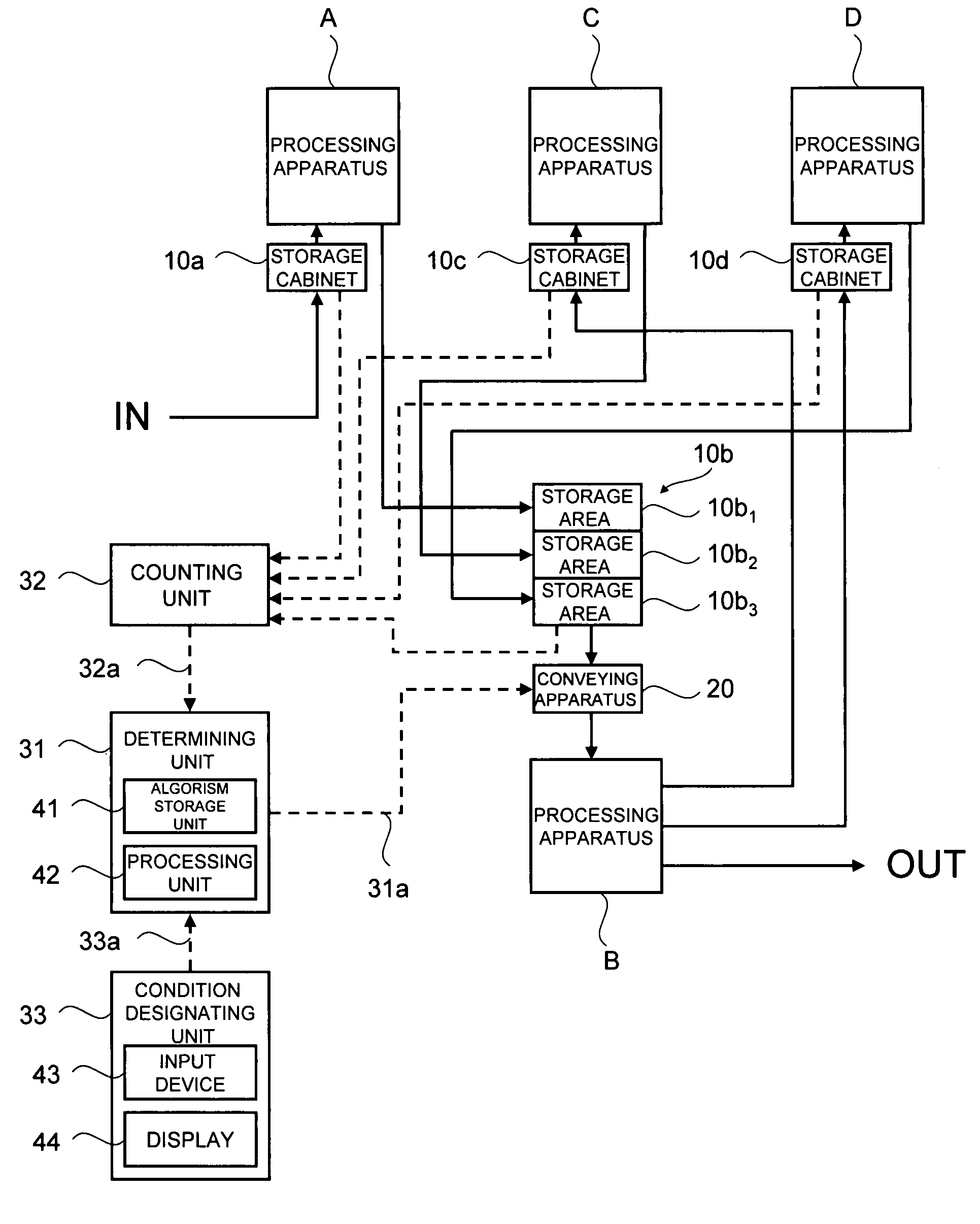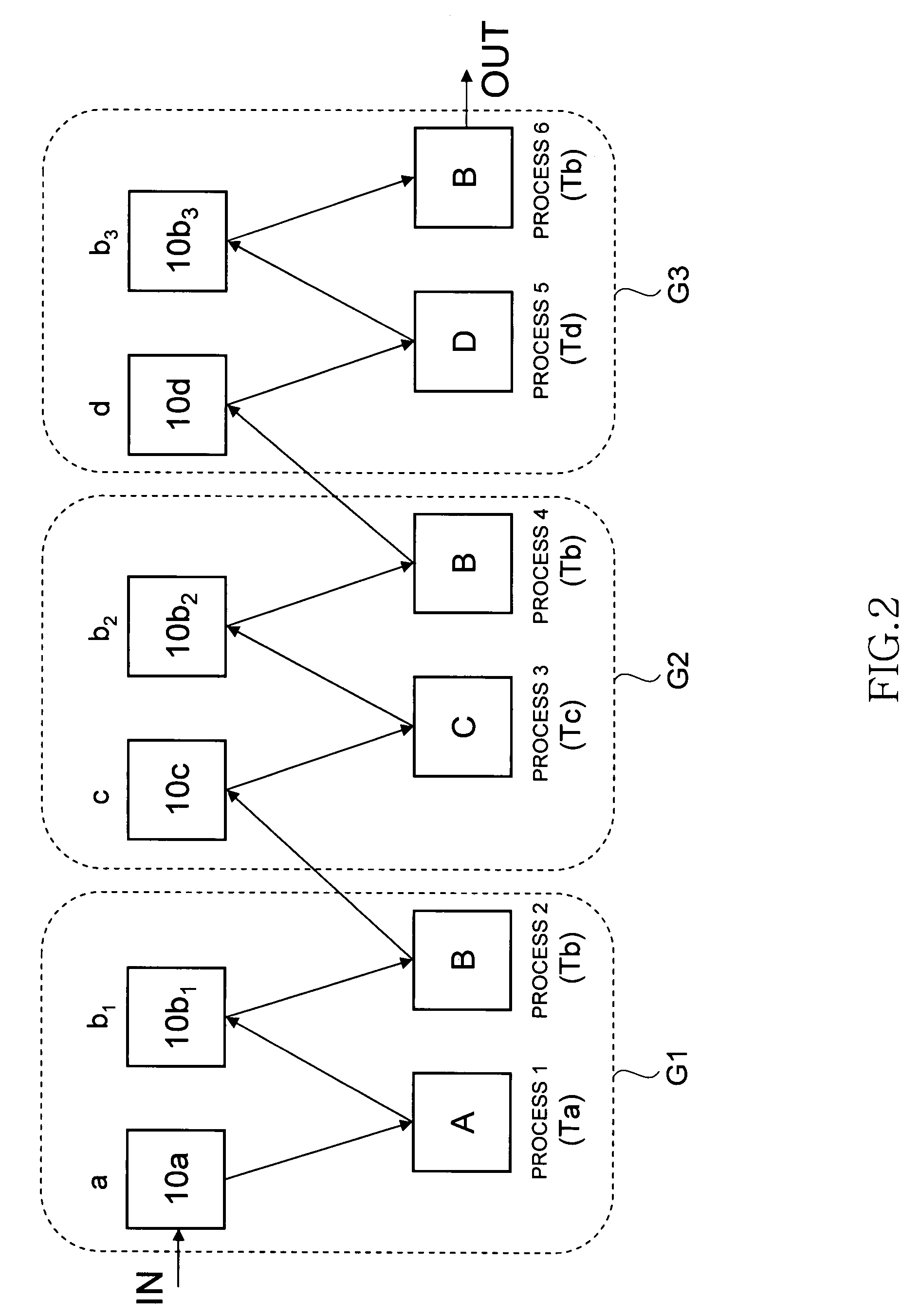Production management method and production management system
a production management system and production management technology, applied in the direction of electric programme control, programme total factory control, instruments, etc., can solve the problems of reducing the operation rate of the processing apparatus used in other processes, difficult to commonly use the same processing apparatus, process becomes a bottleneck, etc., to achieve the accumulation of many in-process products, the effect of increasing priority
- Summary
- Abstract
- Description
- Claims
- Application Information
AI Technical Summary
Benefits of technology
Problems solved by technology
Method used
Image
Examples
Embodiment Construction
[0043]Preferred embodiments of the present invention will now be described in detail hereinafter with reference to the accompanying drawings.
[0044]FIG. 1 is a schematic diagram showing a production line to which a production management system according to a preferred embodiment of the present invention is introduced. In FIG. 1, a solid line arrow shows a flow of an in-process product, and a dotted-line arrow shows a flow of a signal.
[0045]Although it is not particularly limited, the production line shown in FIG. 1 is a production line of a semiconductor chip and so-called the job-shop product line. For convenience of explanation, it is assumed that the processing apparatuses composing the production line are only four types of A, B, C, and D similarly to the example shown in FIG. 14A, and that the line is completed by six processes from process 1 to process 6. In other words, process 1 to process 6 are performed with the processing apparatuses A, B, C, B, D, and B, respectively.
[004...
PUM
 Login to View More
Login to View More Abstract
Description
Claims
Application Information
 Login to View More
Login to View More - R&D
- Intellectual Property
- Life Sciences
- Materials
- Tech Scout
- Unparalleled Data Quality
- Higher Quality Content
- 60% Fewer Hallucinations
Browse by: Latest US Patents, China's latest patents, Technical Efficacy Thesaurus, Application Domain, Technology Topic, Popular Technical Reports.
© 2025 PatSnap. All rights reserved.Legal|Privacy policy|Modern Slavery Act Transparency Statement|Sitemap|About US| Contact US: help@patsnap.com



